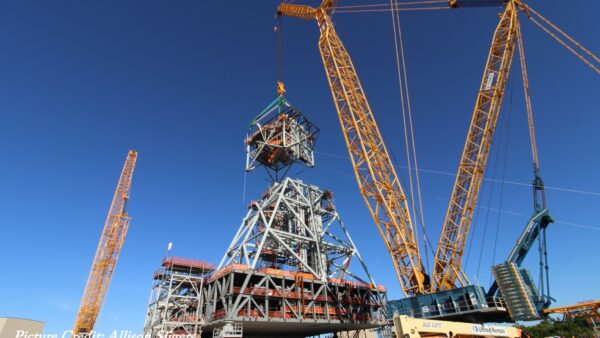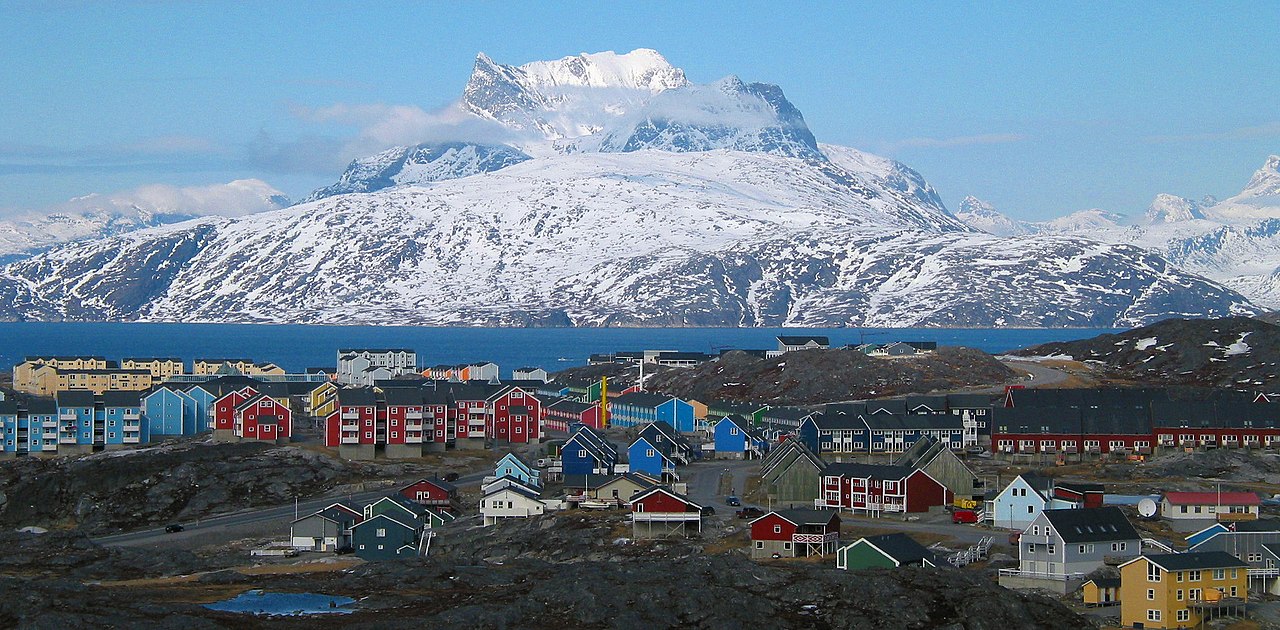
In Nuuk, the capital of Greenland, a school complex is rising that blends in visually with the country’s famous Sermitsiaq massif that towers over the city. Danish architects KHR explains how to design for safety, comfort and beauty in sub-Arctic conditions.
Developing a school in an extreme climate is a special challenge. What works in “standard” environments is not sufficient.
Although Nuuk lies some 200km south of the Arctic Circle, Copenhagen-based architectural firm KHR had to bring its arctic expertise to bear in designing the “Atuarfik Nasasuaq” school in the centre of this low-rise city of 17,000. Its previous commissions, similarly sensitive to the Greenland landscape, include the Greenland Institute of Natural Resources, the Malik Swimming Hall, and a previous school.
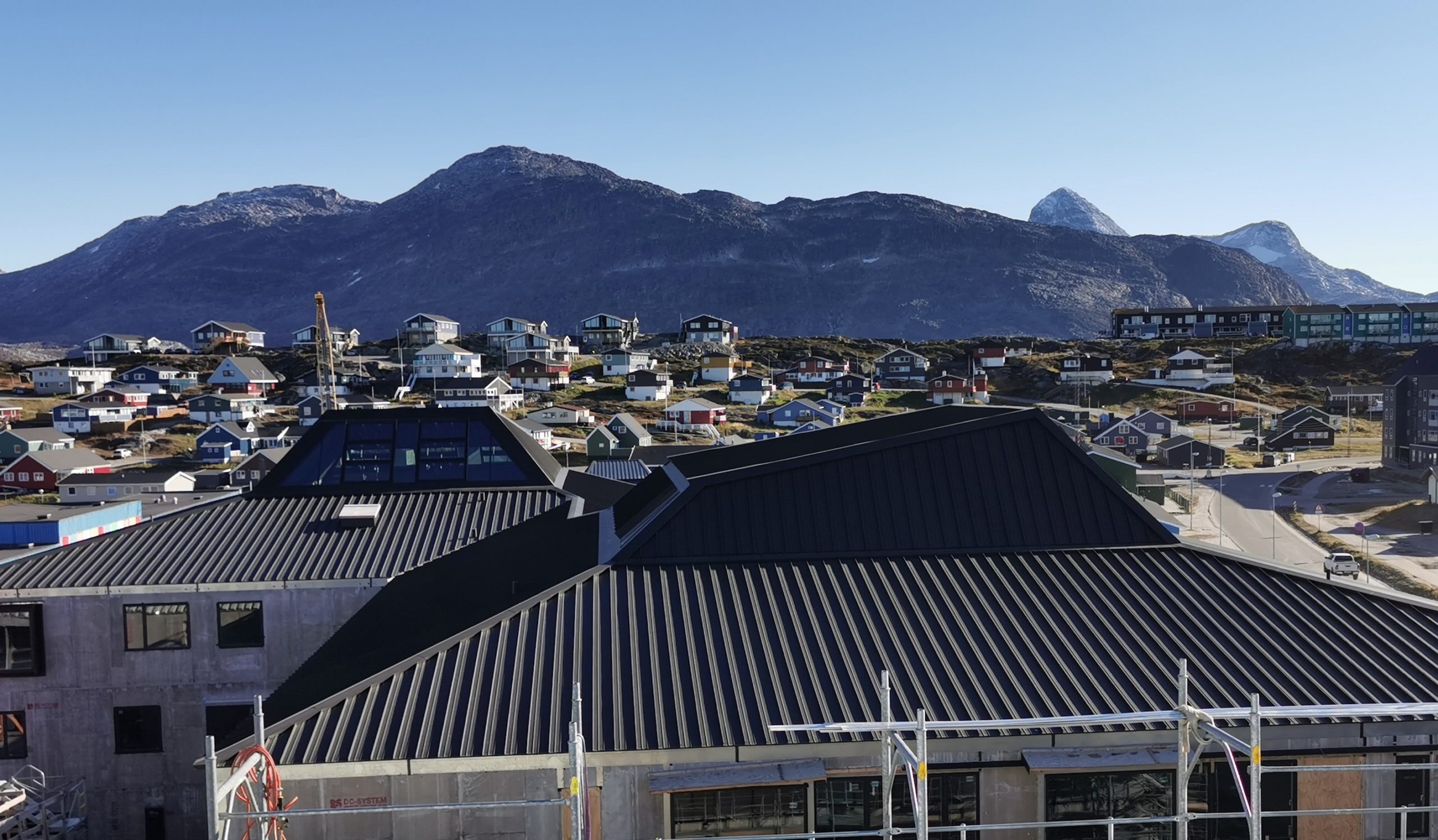
Set to accommodate 1,200 pupils and 120 pre-schoolers, Atuarfik Nasasuaq school consists of six rectangular buildings staggered over a long building plot, creating a series of indoor and outdoor spaces for learning and playing that open onto the surrounding community. It replaces several old buildings that no longer met the required standard.
The school will also function as a new meeting place in the city. A large central space with an adjoining canteen can be separated from the rest of the school for events and clubs, even during school hours.
Blowing a gale
Arctic design considerations include very strong winds, so strong they can make it impossible to open a door against them. So KHR designed entrances on each of the buildings’ four sides, giving pupils the safest place to enter and leave the school whichever direction the wind is blowing.
In the long, dark winters, it’s necessary to use the available daylight as effectively as possible. The design ensures that the light enters the building without dazzling it, regardless of the position of the sun, thanks to the high slanted skylights.
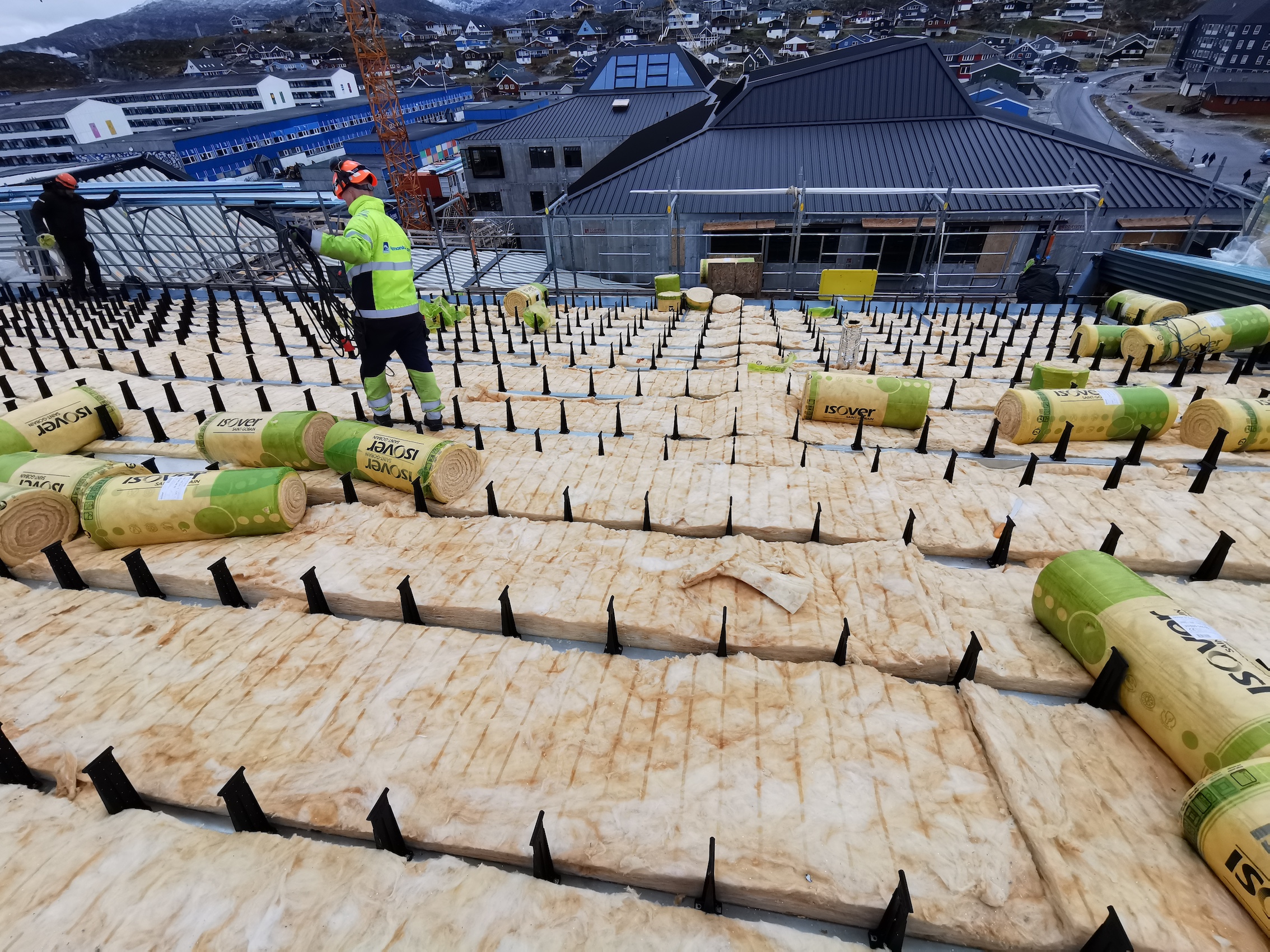
The school’s sloping roofs ensure the region’s abundant snow will not build up to damaging levels.
Loving the landscape
The main theme of the design reflects the Greenlandic story of nature as a basic requirement for life.
Since the Sermitsiaq massif is the backdrop to everything in Nuuk, KHR decided the profile of Atuarfik Nasasuaq school should pay homage to its 1,250m peak and two most prominent sub-peaks.
The sculptural roof forms complement the shape of the mountain range, creating an elongated ridge from most angles, while the school buildings with their moderate height fit in well with surrounding buildings.
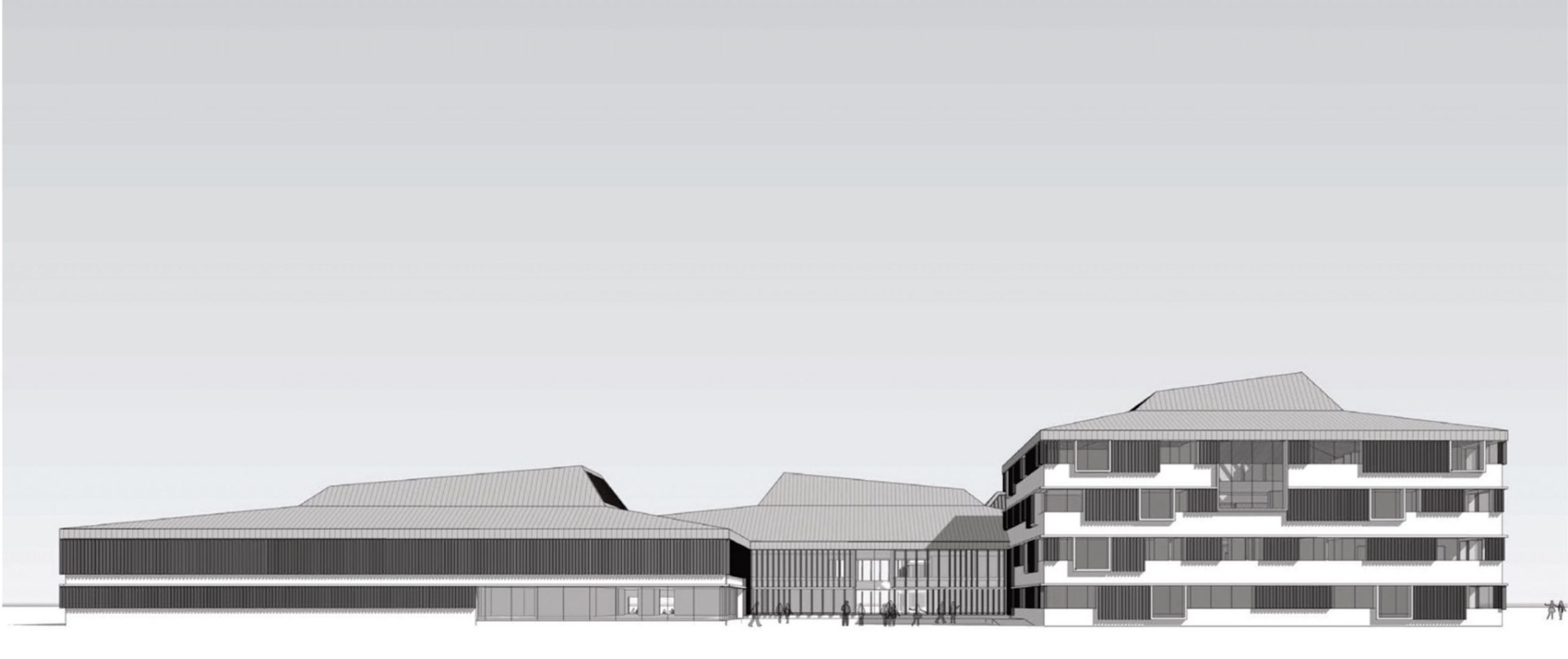
The unusual roofscape with the polygonal tops housing skylights was realised with standing seam elements from Kalzip produced on site. The aluminium profile panels allow for the individual geometry of the roof.
Freezing mittens
The penetration-free roof cladding has no weak points caused by fasteners, a big plus in the Arctic winter. Its lightweight design bridges large spans easily.
As an industrially pre-produced aluminium roof system, it allows short construction times, necessary in the short Arctic summer to get the roofs installed.
Owing to the tight schedule, installation had to continue even in the arctic winter at -25°C at times under floodlights.
“Even though our gloves sometimes freeze to the sheet metal, we are still glad that the Kalzip sheets can be laid properly in wind and weather,” said Per Mortensen, from roofing and façade contractor AE Stalmontage. “With any other material we would not be able to keep to the tight schedule.”
Nuuk is developing, with a view to taking its place as an international city. Atuarfik Nasasuaq school is intended to be a new landmark as well as a great place for kids.

